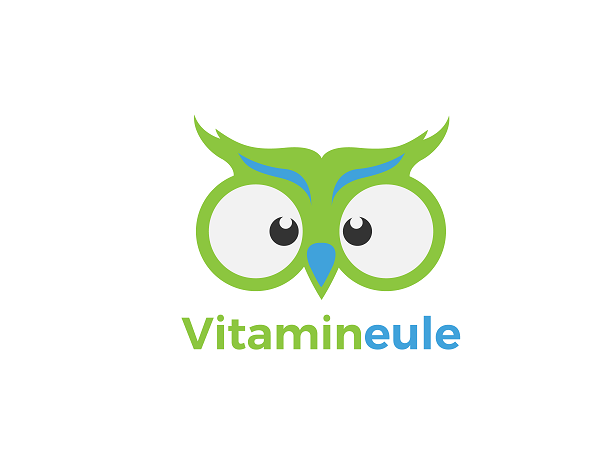

Team Vitamineule
Questions, wishes or suggestions? Just contact us by email or on Facebook.
1. which foods are rich in copper?
Copper is an essential mineral, which is very important for various functions in the body. It contributes to the formation of red blood cells, energy production, collagen production and immune system support. A balanced diet rich in copper-containing foods can help meet copper needs and support good health. In this blog post, we will share the best sources of copper to incorporate into our diets.
Liver:
Liver, especially beef liver, is one of the best natural sources of copper. A small serving of liver contains a significant amount of copper while also providing other important nutrients such as iron, vitamin A and B vitamins.
Seafood:
Seafood such as oysters, clams, crustaceans and crabs are also rich in copper. Oysters in particular are an excellent source of this mineral. In addition to copper, seafood also contains other valuable nutrients such as omega-3 fatty acids and iodine.
Nuts and seeds:
Certain nuts and seeds are good sources of copper. Cashews, almonds, hazelnuts, pistachios and sunflower seeds all contain copper. They are also rich in healthy fats, fiber and antioxidants that contribute to health.
Legumes:
Legumes such as lentils, chickpeas, kidney beans and black beans are not only rich in fiber and vegetable protein, but also contain a moderate amount of copper. They are a healthy addition to a balanced diet.
Dark chocolate:
Good news for chocolate lovers! Dark chocolate with a high cocoa content is not only delicious, but also a source of copper. However, enjoy dark chocolate in moderation as it is also high in calories.
Whole grain products:
Whole grain products such as oatmeal, whole wheat bread, quinoa and brown rice can also contribute to copper intake. Not only are they a good source of copper, but they are also rich in fiber, vitamins and minerals.
Green leafy vegetables:
Certain green leafy vegetables such as spinach, kale, Swiss chard and arugula contain copper along with many other nutrients. Add these healthy vegetables to your diet in salads, smoothies or steamed.
2. What is copper exactly?
Copper plays a crucial role in the body and has several important effects. Here are some of the main effects of copper:
1. supporting iron metabolism: copper is essential for the absorption, transport and storage of iron in the body. It helps release iron from food and improve its absorption in the intestines. This is especially important because iron is needed for the formation of hemoglobin, a component of red blood cells that is essential for oxygen transport in the body.
2. antioxidant effect: Copper is a component of enzymes that support antioxidant processes in the body. These enzymes, such as superoxide dismutase (SOD), help neutralize harmful free radicals and prevent cell damage from oxidative stress. Adequate copper intake can thus help protect the body from oxidative stress and its associated health problems.
3. collagen formation and connective tissue formation: copper plays an important role in the formation of collagen, a structural protein that is crucial for the strength and elasticity of skin, bones, tendons and blood vessels. It supports the formation of collagen fibers and ensures that they are properly linked. This contributes to the health and regeneration of skin, cartilage and bone.
4. immune system support: copper is involved in the functioning of the immune system and plays a role in the activation of immune cells. It contributes to the formation of antibodies and defense against pathogens. Adequate copper levels are important to maintain optimal immune function and fight off infections.
5. energy production: Copper is involved in energy production by participating in enzymes needed for the metabolism of carbohydrates, fats and proteins. It helps the body convert nutrients into usable energy, helping to maintain an active and healthy metabolism.
3. what does copper do in the human organism?
Copper performs a variety of important tasks in the body and is indispensable for several areas. Here are some of the main areas in which copper plays a significant role:
1. iron metabolism: copper is essential for the transport, absorption and storage of iron in the body. It supports the release of iron from food and its absorption in the intestine. This is of great importance because iron is required for the formation of hemoglobin, a component of red blood cells that is crucial for oxygen transport in the body.
2. collagen formation and connective tissue formation: copper is involved in the synthesis of collagen, a structural protein found in skin, bones, tendons, blood vessels and other tissues. Copper helps in the formation of stable collagen fibers and promotes the strength and elasticity of connective tissue.
3. antioxidant effect: copper is a component of antioxidant enzymes such as superoxide dismutase (SOD), which neutralize free radicals and reduce oxidative stress. Through its antioxidant effect, copper helps prevent cell damage and protect the body from oxidative stress.
4. immune system support: copper plays a role in immune system function by stimulating immune cell activity and supporting antibody production. It helps strengthen the immune response and defend against pathogens.
5. energy production: Copper is involved in several steps of energy metabolism. It is necessary for the activity of enzymes involved in the conversion of nutrients into energy. Copper helps the body efficiently use carbohydrates, fats and proteins to produce energy.
6. neurological functions: Copper plays a role in the development and function of the nervous system. It is important for the production of neurotransmitters and myelinating activity, which is critical for the transmission of nerve impulses.
7. iron and copper metabolism in pregnancy: during pregnancy, copper plays a special role in the regulation of iron metabolism. It contributes to the adequate absorption and storage of iron to meet the increased demand during pregnancy.
4. copper in the form of dietary supplements
If you want to increase a too low copper value with a dietary supplement, you should definitely pay attention to the form of the active ingredient and its origin. Copper capsules are particularly suitable for increasing copper levels. They are very well tolerated and are utilized by the body to a high degree. Likewise, the preparation should not contain any chemical additives such as microcrystalline cellulose. If you buy a preparation from Germany, you can be sure that the product has also been produced safely and is of high quality.
Our recommendation:
Vitamineule® Copper Capsules
In our online store you will find our copper capsules from Vitamineule®, which are completely free of artificial additives. Vitamineule® Copper Capsules contain 4 mg of pure copper per capsule in the effective form copper gluconate. Each can contains 90 capsules. In addition to fast & free shipping, we offer a voluntary six-month return guarantee on all products.
5. conclusion: Which foods are rich in copper?
Adequate intake of copper through a balanced diet is sufficient in most cases to meet the need. Nevertheless, there may be situations in which supplementation with copper supplements is useful. Dietary supplements can be an effective way to improve copper status, especially for individuals with established copper deficiency or certain health conditions that require increased copper intake. However, copper supplements should only be taken under a physician's supervision and recommendation to ensure that the dosage is appropriate and to avoid potential interactions with other medications. It is important to note that proper dosing of copper supplements is critical, as excess copper can be toxic. Therefore, copper supplements should always be taken in consultation with a physician or qualified professional.
Further reading:
- Management of Iron-Deficiency Anemia in Inflammatory Bowel Disease.
- Management of Iron Deficiency Anemia
- Copper: effects of deficiency and overload
- Copper-induced tumor cell death mechanisms and antitumor theragnostic applications of copper complexes
- Copper Complexes in Cancer Therapy
- Antimicrobial Copper-Based Materials and Coatings: Potential Multifaceted Biomedical Applications
- Disclaimer and general notice on medical topics: The content presented in our health blog is for neutral information and general education purposes only. It does not constitute a recommendation or advertisement of any diagnostic method, treatment or drug described or mentioned. The text does not claim to be complete, nor can the timeliness, accuracy and balance of the information presented be guaranteed. The text is in no way a substitute for professional advice from a physician or pharmacist, and it should not be used as a basis for independent diagnosis and initiation, modification, or termination of treatment of any disease. Always consult your trusted physician for any health questions or complaints. Mach Dich Wach! GmbH and the authors accept no liability for any inconvenience or damage resulting from the use of the information presented here.

